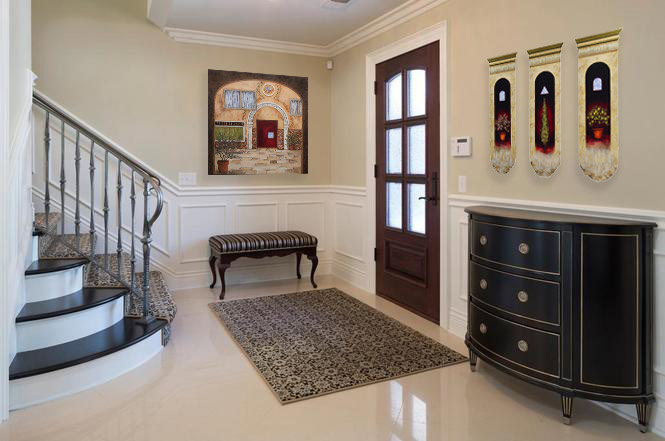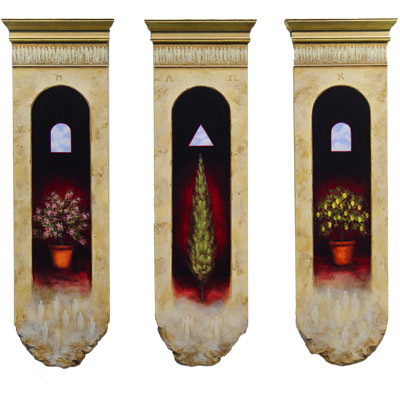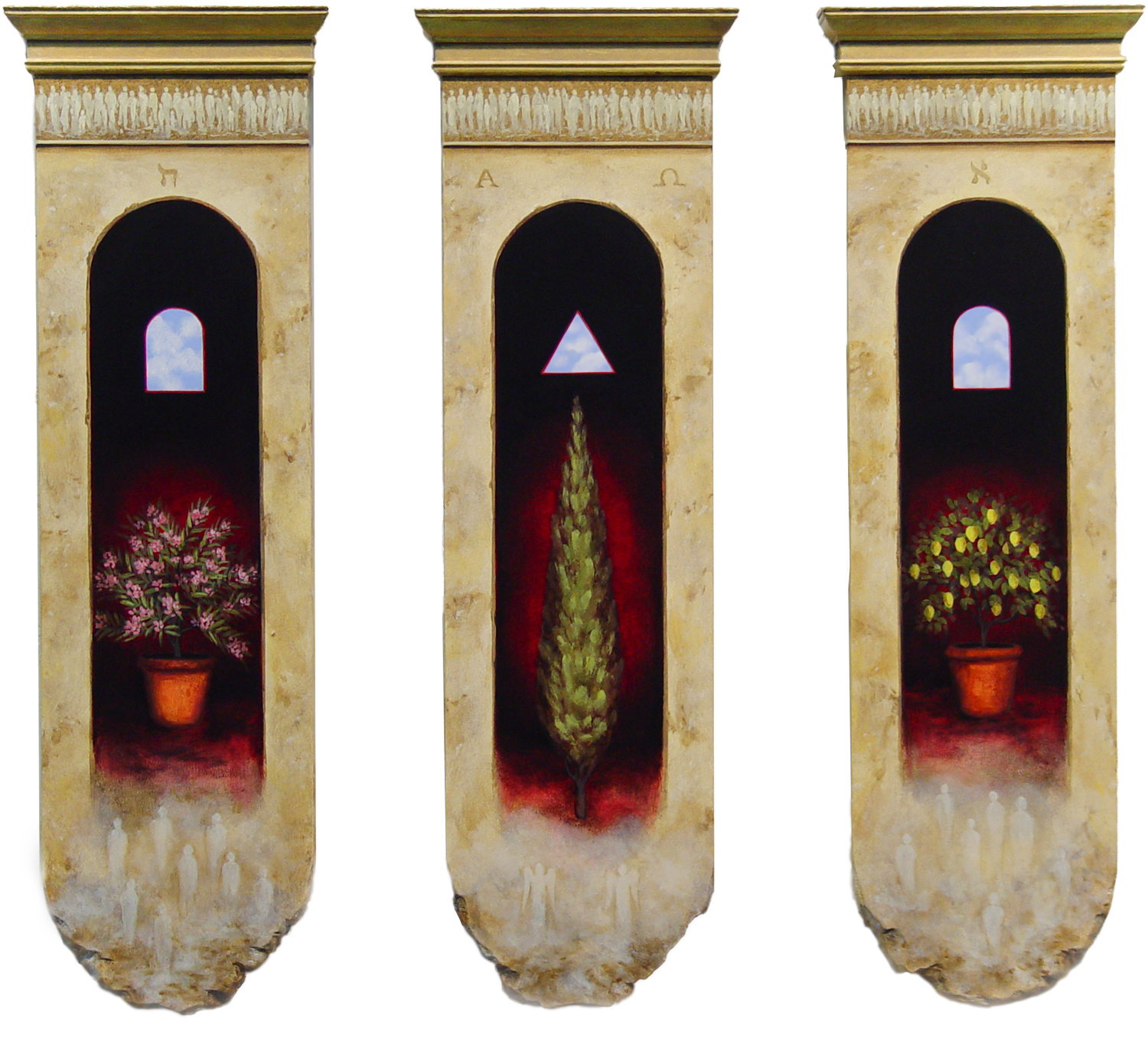The Power of Three (triptych)
- Charles H. Reinike III -
Oil on Carved Wooden Panels with Cornice
30 X 10 (each)
$3,500
Triptychs, especially in the context of religious art, often feature carved panels such as the ones in The Power of Three. In these panels the word "Three" is the basis for the story it tells.
"Three" surpasses a numerical value. It is the first number representing totality, enabling multiplicity and overcoming duality. Duality, as a state of balance, is static. Three, through its forward movement, overcomes this stasis. The union of man and woman yields a third being, an offspring. Three embodies completeness, representing a beginning, middle, and end, encompassing past, present, and future. It is the foundational shape in geometry, the triangle. In religion, it symbolizes the Holy Trinity.
In the triptych The Power of Three, the two side panels, with their potted plants, represent humanity's attempts to control nature – a state of duality. The oleander in the left pot is beautiful but poisonous. The lemons in the right container are inviting but sour. The central panel, with its eternal cypress pointing heavenward and the triangular window, symbolizes the Holy Trinity and God, overcoming this static duality.
Ethereal figures move through the archways toward the windows and ultimate enlightenment. A frieze with a timeline of humanity spans the panels, emphasizing that all exist within a continuum, shaped by the past and contributing to the future. The symbols at the top are the Greek Alpha and Omega and the Hebrew Aleph and Tav -the beginning and the end of the alphabets.
The Power of Three hanging in a room with Ideal Lost.


